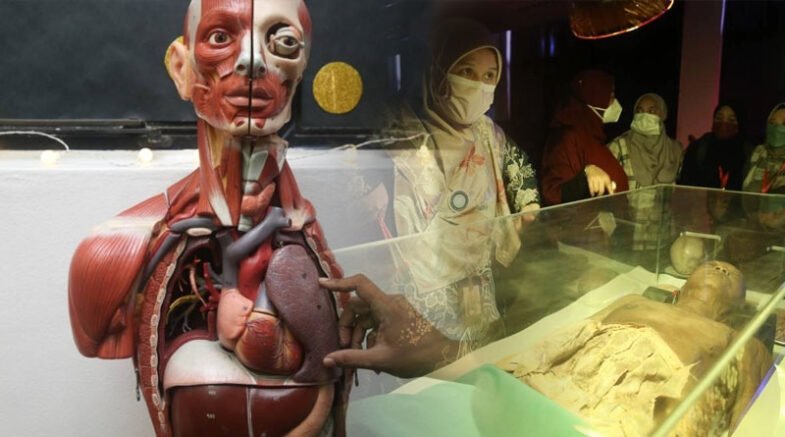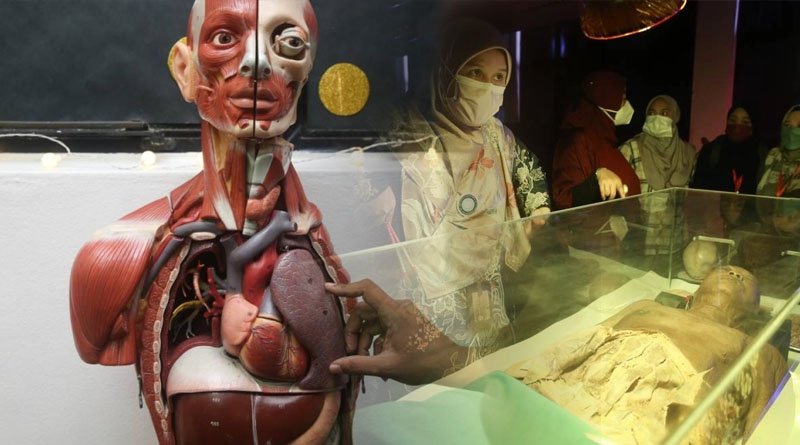The anatomy expo featured growth stages of human baby, as well as a spine, chest & upper limbs exhibit featuring preserved human limbs with their veins & muscle viscosity still intact.

For the first time, the University of Malaya’s (UM) annual Human Anatomy Expo was opened to the public at its Human Anatomy Lab.
A 45-year-old preserved human head that was cut in half and preserved for study is one of the main attractions. The head’s facial hair is still as fresh as the day the body was brought in.
Dr. Intan Suhana, head of UM’s Department of Anatomy, told Malay Mail that the university wanted to hold an open expo for the first time to educate the public on human anatomy, raise awareness, and inspire children to pursue careers in science and medicine.
“We felt it was time to plan something fun like this.” We’d been doing it for a while, but this time it had to be open to the public because there’s so much to see and learn. We have exhibition booths as well as real cadavers that have been preserved and are being studied, which you can see and touch. “We will also be playing videos, and we have a dark room for the special exhibit,” Dr. Siti said today at the expo.
The 45-year-old human head is inside this dark room, along with a cadaver whose brain has been removed through surgery and stored in jars for study.
The anatomy expo featured the growth stages of a human baby, as well as a spine, chest, and upper limbs exhibit featuring preserved human limbs with their veins and muscle viscosity still intact.
The microscopic anatomy booth also has two microscopes where you can view tissue samples from various parts of the human body, such as the arm, torso, penis, cervix, and spine.
There are also preserved human brains on display, some of which have been cut in half to show what they look like on the inside, as well as a booth dedicated to the history of anatomy and medicine.
Visitors can also see and touch several cadavers preserved through the plastination process, watch dissection videos, explore the latest technology used in the study of human anatomy, take pictures at the photobooth, and buy books on sale.
The expo’s director, Dr. Siti Rosmani, stated that it is also organising a body donation drive in which you can pledge to donate your organs for research after death.
“Because cadavers are difficult to obtain in Malaysia, they must be purchased, which is an expensive process.” Good parts that will last a long time can cost hundreds of thousands of ringgit, if not millions.
“Companies must source cadavers and parts from other countries, including Taiwan.” Furthermore, Malaysia is primarily a Muslim country, and people are wary of having their loved ones’ bodies used for scientific purposes. “We hope to get more pledges with this drive,” she said.
Dr. Siti was also the one who showed the 45-year-old preserved head to Malay Mail, saying it was one of the best samples they had. Aside from that, visitors can compete for prizes in games and quizzes held at the expo.
